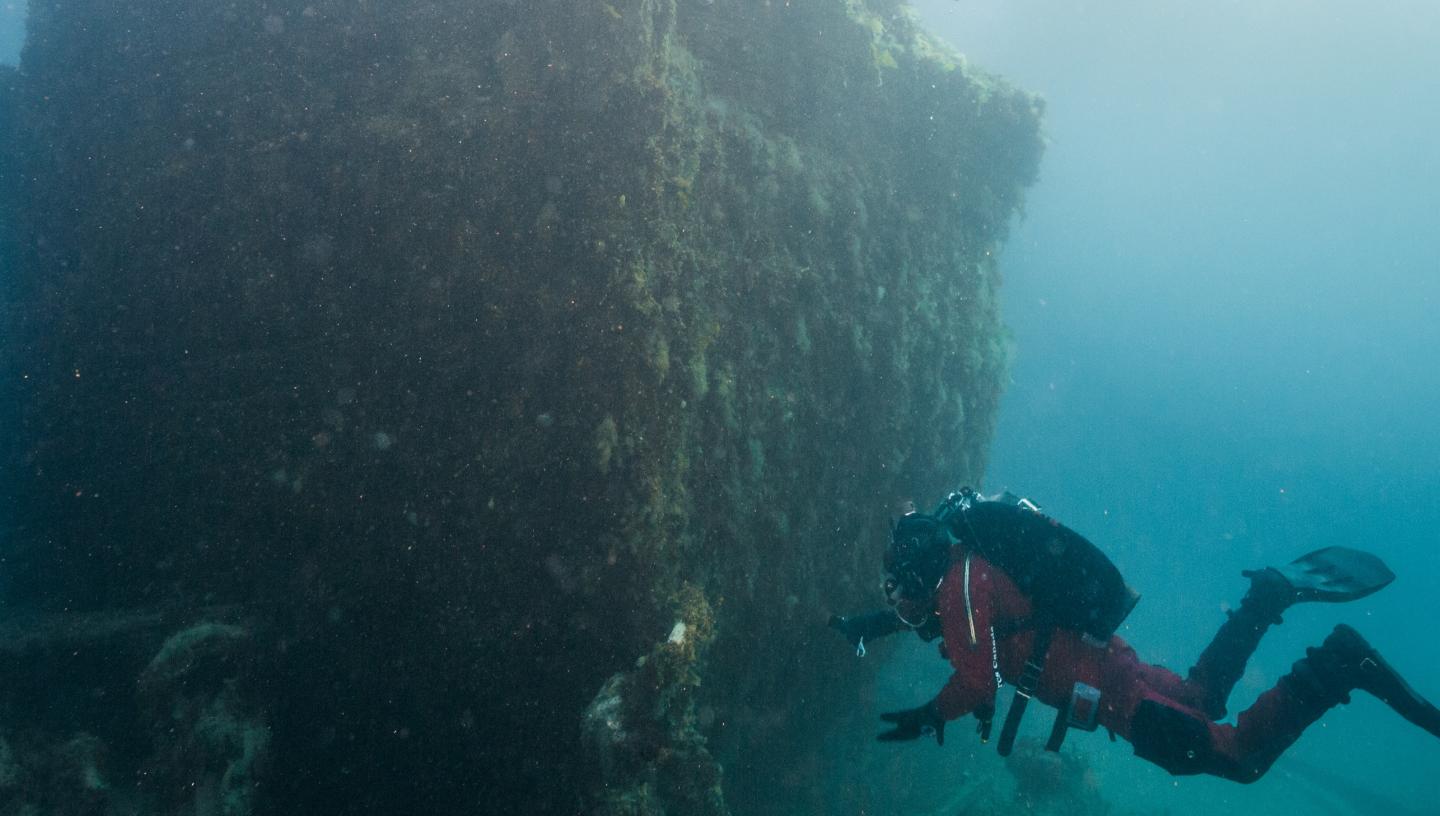
04 Sep 2017
We discover the 8 stages of 'life' of an item, buried under the ice for over 100 years and now on display in the Death in the ice exhibition at London's National Maritime Museum.
1. What is the Preston Patent Illuminator?
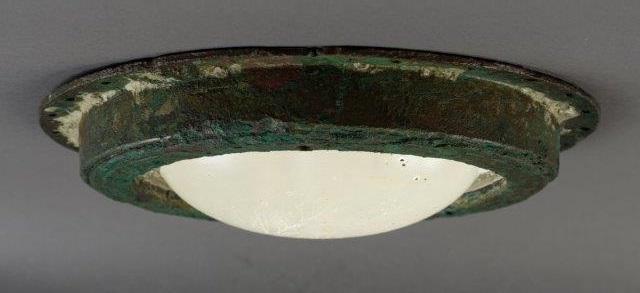
(Photo: Preston Patent Illuminator recovered from HMS Erebus © Parks Canada / Marni Wilson)
Preston Patent Illuminator is a glass prism used to transmit light to the dark lower deck of a ship, in this case HMS Erebus.
Its effectiveness during the long dark Arctic winters would have been limited but there were no electric lights on board the Franklin expedition ships.
The picture above shows the deck illuminator that was recovered from Erebus, as it would have appeared with light shining through the glass.
2. Where was the illuminator found?
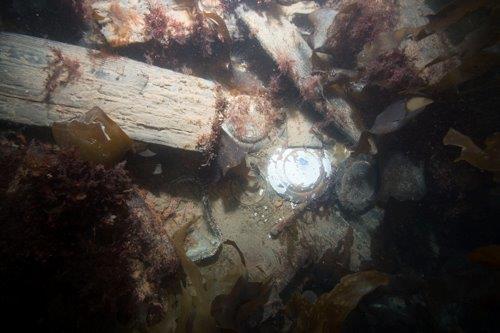
The illuminator which is on display in the exhibition was recovered from HMS Erebus in 2015 by underwater archaeologist Marc-André Bernier who found it on the lower deck. At some point during its past, it had come dislodged from the upper decking where it would have originally been mounted.
3. What has more than 100 years under the ice done to the illuminator?
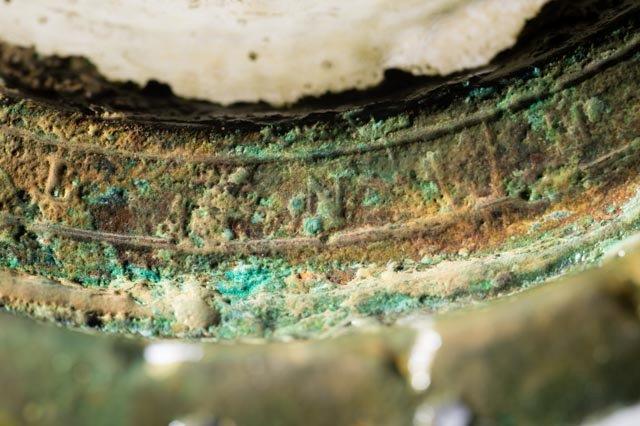
(Photo: Detail of the brass surface on the domed side with patches of bulky corrosion and areas of surface loss © Parks Canada / Thierry Boyer)
The state of archaeological objects often provides insight into the history of the object. So for this reason decay can be seen as a valuable source of information.
When we look closely at flat side of the illuminator, which would have been face-up on the exterior side of the deck, we can see that the glass prism is heavily marked. Some of these marks were perhaps produced by the crew dragging equipment over it, or from grit being crunched into the glass as they walked overtop.
These observations, and others, act like clues, and can be used with other contextual information to form a better understanding of the site and materials found.
4. What happened to the illuminator once it had been found?
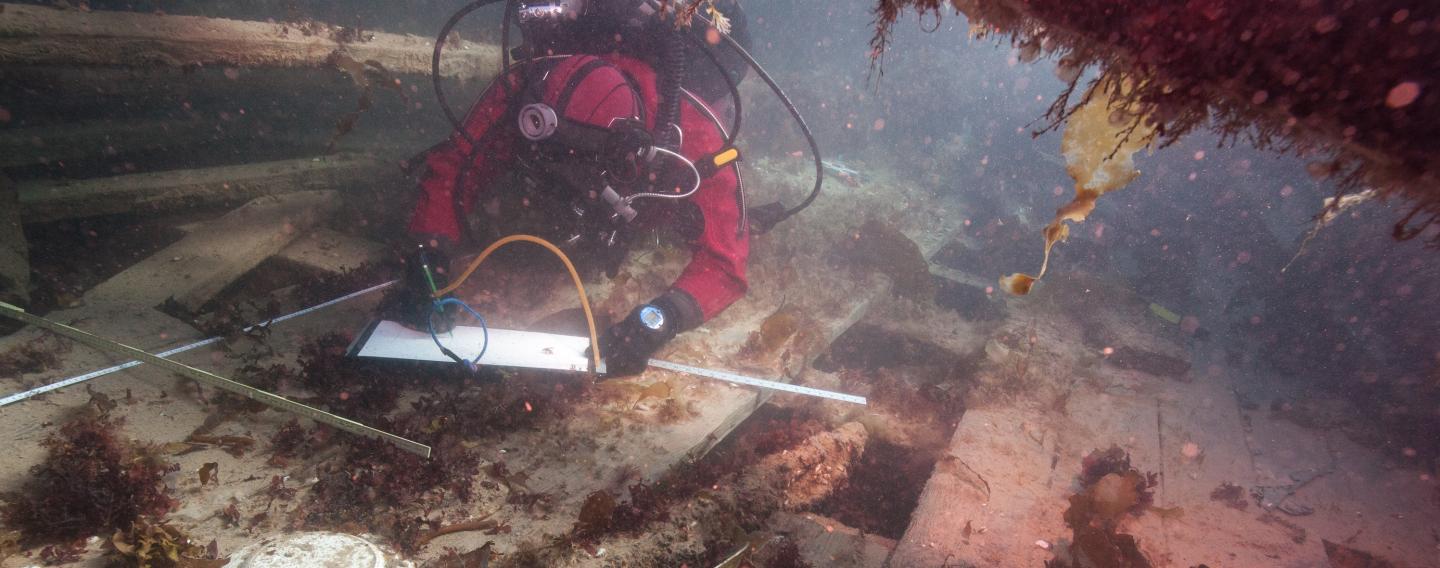
(Photo: Archaeologist Filippo Ronca mapping artefacts scattered on the lower deck of HMS Erebus. Copyright Parks Canada / Marc-André Bernier, 2016)
Before it was excavated, the location of the illuminator was recorded by the archaeologist.
The process of conservation began right away during the excavation in order to preserve the artifact in the best possible condition – the change from the sea floor burial to air and a dry environment can be very detrimental.
5. Where was it taken after it had been recovered from beneath the ice?
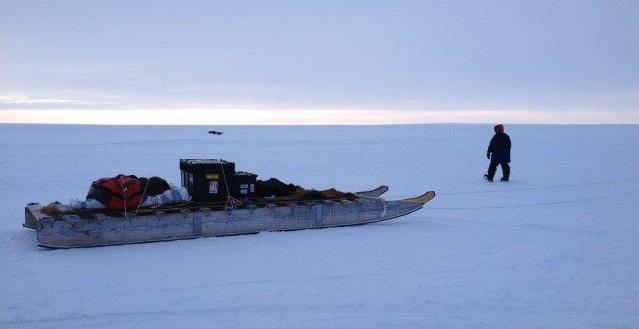
(Photo: Artifacts crate at the beginning of the journey to Ottawa from the north. © Parks Canada / Flora Davidson)
Once retrieved from beneath the ice, it was taken to the laboratory in Ottawa for conservation treatment.
It was packed in moist towelling and self-sealing bags to prevent it from drying out. It was then placed in a rigid protective container lined with insulating material and was held in place with foam blocks to prevent physical damage. The illuminator then started its long journey from the site in Nunavut to the laboratory in Ottawa almost 3000 km away.
6. What happened to it in the laboratory?
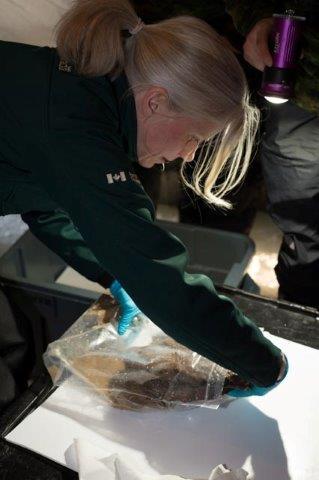
(Photo: A conservator packs an artifact to prevent it from drying out. © Parks Canada / Thierry Boyer)
In the lab, the illuminator was gently cleaned of burial debris such as silt, seaweed and other forms of marine life. It was then placed in an alkaline solution to extract the salts it was contaminated with from the sea. This is a very important step since even once the object is dried, the presence of salts can be very damaging.
Once this process was complete, the illuminator was rinsed in laboratory grade alcohol to remove residual chemicals and dehydrate the object.
Once the object was dry, careful cleaning of the corroded surface was undertaken to reveal further details. Only corrosion which was disfiguring and could be safely removed to reveal further details was cleaned away. Removing all the corrosion completely can actually diminish authenticity.
Further preventive measures were carried out at the end of the treatment. The illuminator was treated with a corrosion inhibitor. Lastly, since the corroded surface is porous and more fragile than metal, it was consolidated using a dilute conservation grade acrylic adhesive to protect it.
The conserved illuminator is now in a more stable condition than prior to treatment, however, as with many archaeological materials, it will continue to deteriorate if proper conditions are not maintained. This is why there are specific temperature, humidity and handling recommendations for the ongoing care of the artifacts.
7. How was it transported to Greenwich?
The illuminator was sent with a collection of objects bound for the exhibition to the Canadian Museum of History (CMH) where they were fitted with custom mounts and then shipped by air to Greenwich. A courier from CMH travelled with the artifacts to Greenwich to supervise the unpacking and the installation of the illuminator and the other objects in the exhibition cases.
8. What next for the Preston Patent Illuminator?
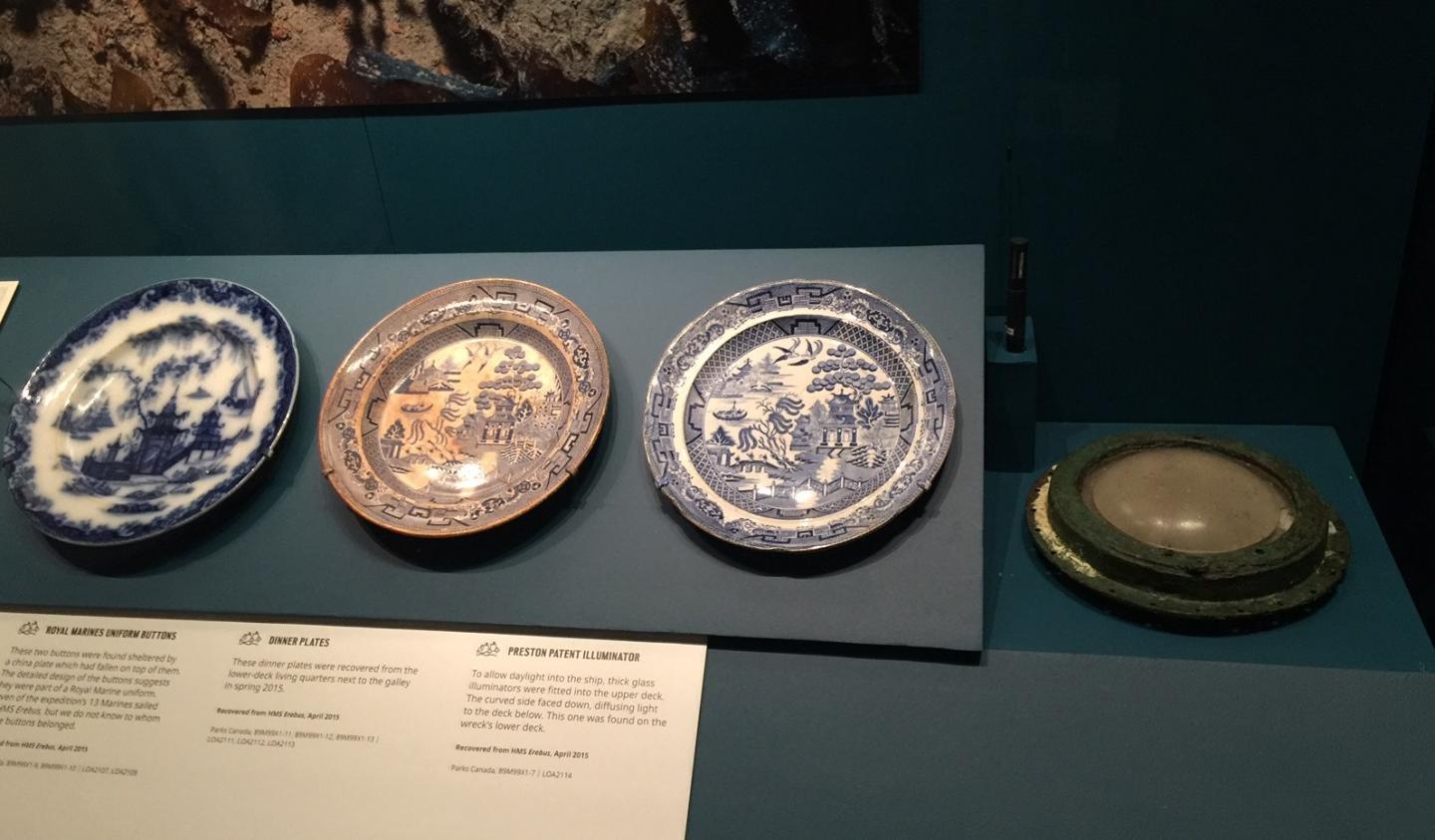
(Photo: shows the illiuminator - far right of picture - next to plates also recovered from HMS Erebus, on display in the Death in the ice exhibition at Greenwich)
The illuminator, along with 64 other items recovered from beneath the ice, is now on display in the National Maritime Museum, London, as part of the Death in the ice exhibition. When the exhibition ends, it will be returned to Canada where it will be on display for a period of time at the Canadian Museum of History in Gatineau, Quebec.
Information provided by Flora Davidson, Conservator, Parks Canada
Death in the ice
This item and many others recovered from beneath the ice can be seen at the world-first exhibition, Death in the ice, which tells the shocking story of Franklin's final expedition to the Arctic.
Objects from the recently discovered wreck of the HMS Erebus together with other artefacts and curiosities will be on display, many for the first time, aiming to uncover the mysterious fate of Sir John Franklin and his crew. Can the latest discoveries shed light on one of history's most enduring mysteries?